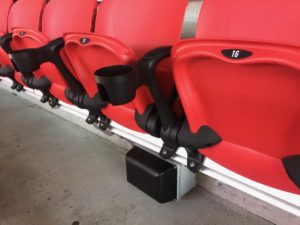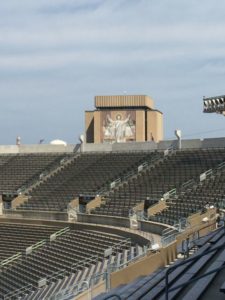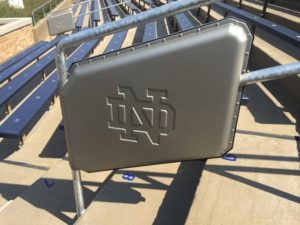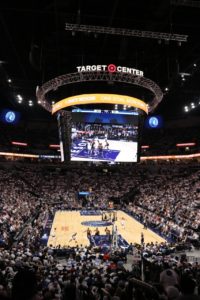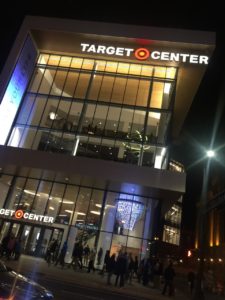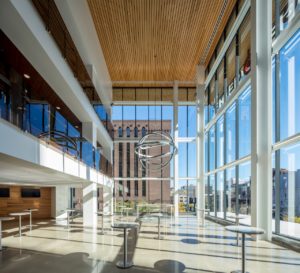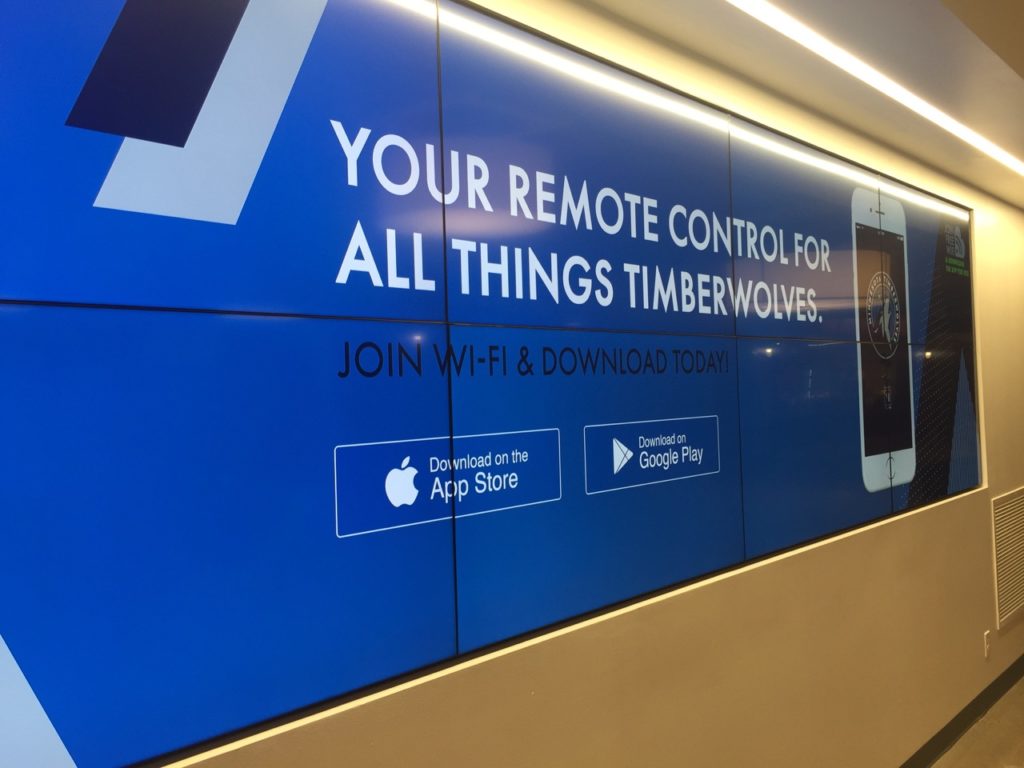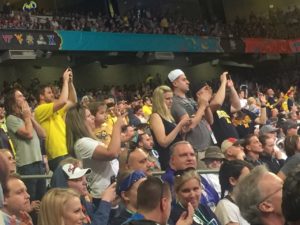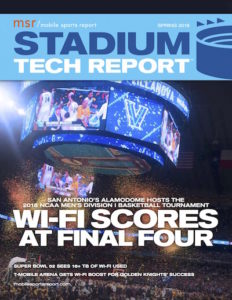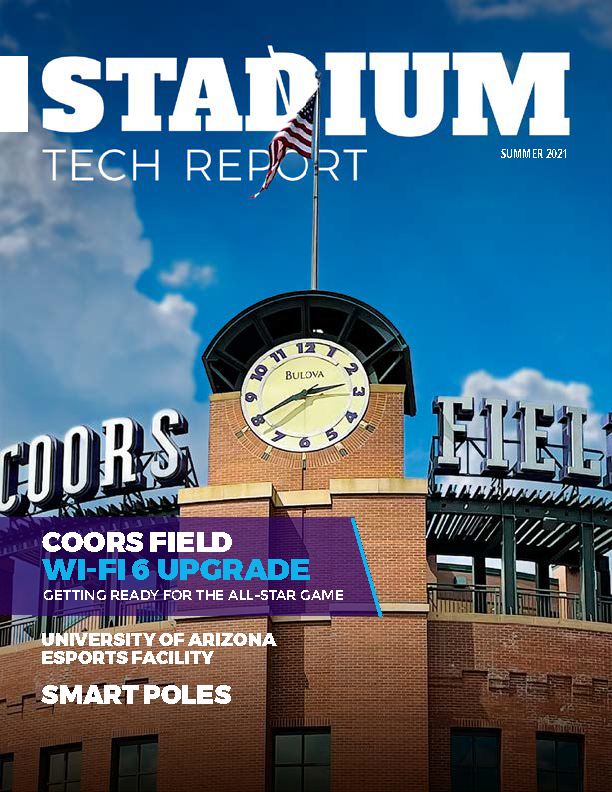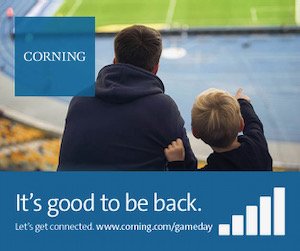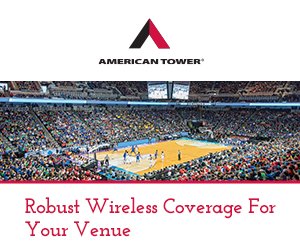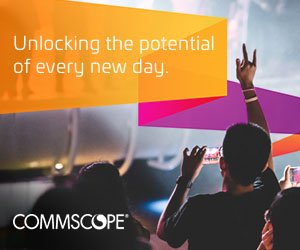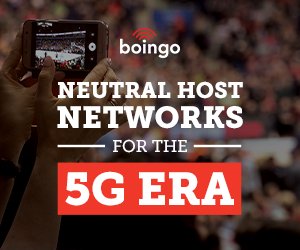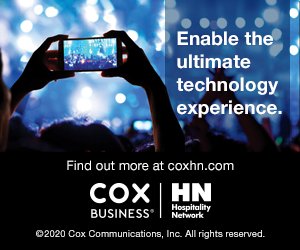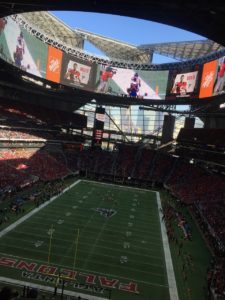
The iconic ‘halo board’ video screen below the unique roof opening at Atlanta’s Mercedes-Benz Stadium. Credit all photos: Paul Kapustka, MSR (click on any picture for a larger image)
We’d long suspected that Mercedes-Benz Stadium, which opened in August of 2017, had seen big data days inside the 71,000-seat arena with its innovative technology, but until Sunday the Falcons had never made any network-performance data publicly available. But a day after the venue saw another 8.06 TB of Wi-Fi used during the SEC Championship game, Danny Branch, chief information officer for AMB Sports & Entertainment, revealed the statistics during a live MSR visit at an Atlanta Falcons home game. The 12 TB mark (which was an estimate — we’ll check back with the Falcons for exact numbers) is the second-highest we’ve ever seen in our unofficial research of single-day Wi-Fi totals, trailing only the 16.31 TB recorded at Super Bowl LII in February at U.S. Bank Stadium.
“We’re confident and ready for the Super Bowl,” said Branch during a pregame stadium tour, details of which we’ll dig into deeper in a full profile for our upcoming Winter Stadium Tech Report. Multiple network speed tests taken by MSR during Sunday’s 26-16 Falcons loss to the visiting Baltimore Ravens showed robust Wi-Fi performance on the network that uses gear from Aruba, a Hewlett Packard Enterprise company, in a design from AmpThink.
DAS renovation complete
According to Branch, the cellular distributed antenna system (DAS) network inside Mercedes-Benz — a deployment that is at the center of a current lawsuit filed by contractor IBM against gear supplier and designer Corning — is also now at full deployment, with the completion of 700 new under-seat DAS antenna deployments, mostly in the upper seating deck.MSR speed tests taken during Sunday’s game showed a wide range of DAS results, from single-digit tests in some tough-deployment areas to results near 100 Mbps directly in front of what looked like some new antenna deployments. Again, look for more details in our upcoming profile in the Winter Stadium Tech Report (due out in mid-December).
“We’re in a good place [with the DAS],” said Branch, though he did say there was going to be more DAS work done on the outside of Mercedes-Benz Stadium prior to when Super Bowl LIII comes to the venue on Feb. 3, 2019, mainly to help ensure that the move toward more digital Super Bowl tickets goes smoothly. Mercedes-Benz Stadium also now has a couple of MatSing ball antennas in its rafters, there to bring DAS coverage to the sidelines of the playing field.
Sunday the Mercedes-Benz Stadium staffers were hosting a rare big-game back-to-back event, following Saturday’s packed-house tilt between SEC powers Alabama and Georgia, a championship-game rematch won by Alabama 35-28 after a dramatic comeback.
“That was a massive flip,” said Branch of the two-day stretch, which saw another huge data day Saturday with 8.06 TB of Wi-Fi used. The network, sponsored by backbone provider AT&T, averages about a 50 percent take rate from event attendees, according to Branch, who gave praise to Aruba and AmpThink for their combined deployment efforts.
“The expectation for fans now is that there will be Wi-Fi [in a sports venue],” said Branch. “But I love it when friends come to me after a game and tell me ‘the Wi-Fi is so fast!’ ”
THE MSR TOP 17 FOR WI-FI
1. Super Bowl 52, U.S. Bank Stadium, Minneapolis, Minn., Feb. 4, 2018: Wi-Fi: 16.31 TB
2. 2018 College Football Playoff Championship, Alabama vs. Georgia, Mercedes-Benz Stadium, Atlanta, Ga., Jan. 8, 2018: Wi-Fi: 12.0 TB*
3. Super Bowl 51, NRG Stadium, Houston, Feb. 5, 2017: Wi-Fi: 11.8 TB
4. Atlanta Falcons vs. Philadelphia Eagles, Lincoln Financial Field, Philadelphia, Pa., Sept. 6, 2018: Wi-Fi: 10.86 TB
5. Super Bowl 50, Levi’s Stadium, Santa Clara, Calif., Feb. 7, 2016: Wi-Fi: 10.1 TB
6. Taylor Swift Reputation Tour, Gillette Stadium, Foxborough, Mass., July 27, 2018: Wi-Fi: 9.76 TB
7. Minnesota Vikings vs. Philadelphia Eagles, NFC Championship Game, Lincoln Financial Field, Philadelphia, Pa., Jan. 21, 2018: Wi-Fi: 8.76 TB
8. Jacksonville Jaguars vs. New England Patriots, AFC Championship Game, Gillette Stadium, Foxborough, Mass., Jan. 21, 2018: Wi-Fi: 8.53 TB
9. Taylor Swift Reputation Tour, Broncos Stadium at Mile High, May 25, 2018: Wi-Fi: 8.1 TB
10. Kansas City Chiefs vs. New England Patriots, Gillette Stadium, Foxborough, Mass., Sept. 7, 2017: Wi-Fi: 8.08 TB
11. SEC Championship Game, Alabama vs. Georgia, Mercedes-Benz Stadium, Atlanta, Ga., Dec. 1, 2018: Wi-Fi: 8.06 TB*
12. Green Bay Packers vs. Dallas Cowboys, Divisional Playoffs, AT&T Stadium, Arlington, Texas, Jan. 15, 2017: Wi-Fi: 7.25 TB
13. Stanford vs. Notre Dame, Notre Dame Stadium, South Bend, Ind., Sept. 29, 2018: 7.19 TB
14. (tie) Southern California vs. Notre Dame, Notre Dame Stadium, South Bend, Ind., Oct. 21, 2017: 7.0 TB
Arkansas State vs. Nebraska, Memorial Stadium, Lincoln, Neb., Sept 2, 2017: Wi-Fi: 7.0 TB
15. WrestleMania 32, AT&T Stadium, Arlington, Texas, April 3, 2016: Wi-Fi: 6.77 TB
16. Wisconsin vs. Nebraska, Memorial Stadium, Lincoln, Neb., Oct. 7, 2017: Wi-Fi: 6.3 TB
17. Super Bowl 49, University of Phoenix Stadium, Glendale, Ariz., Feb. 1, 2015: Wi-Fi: 6.23 TB
* = pending official exact data
